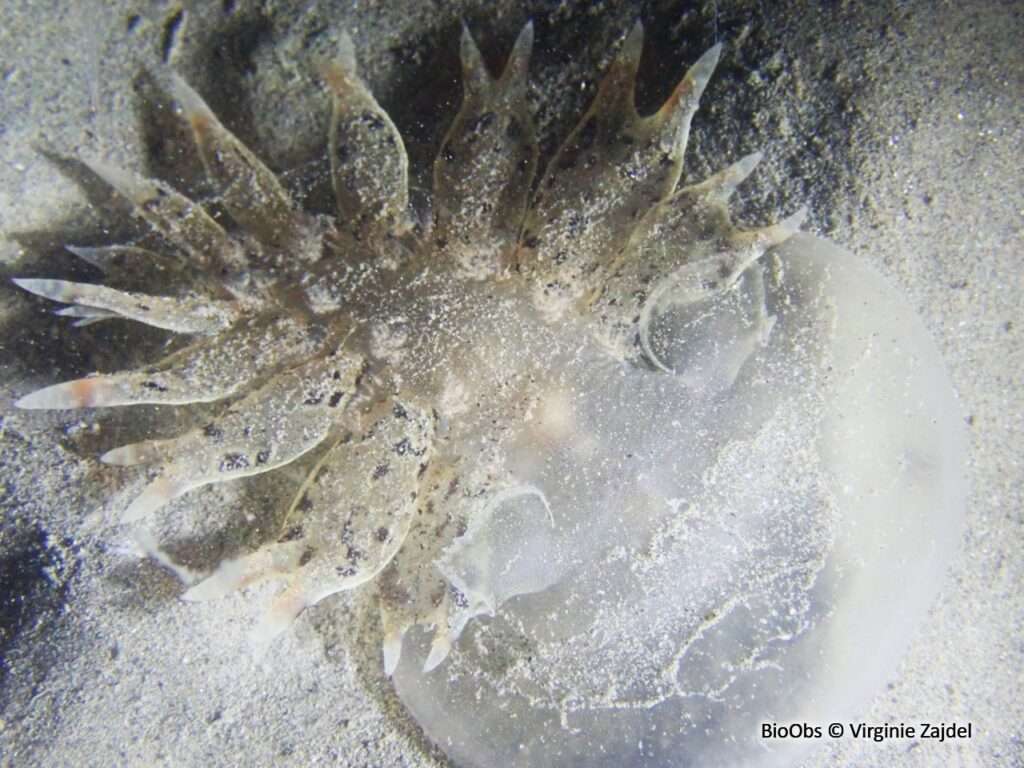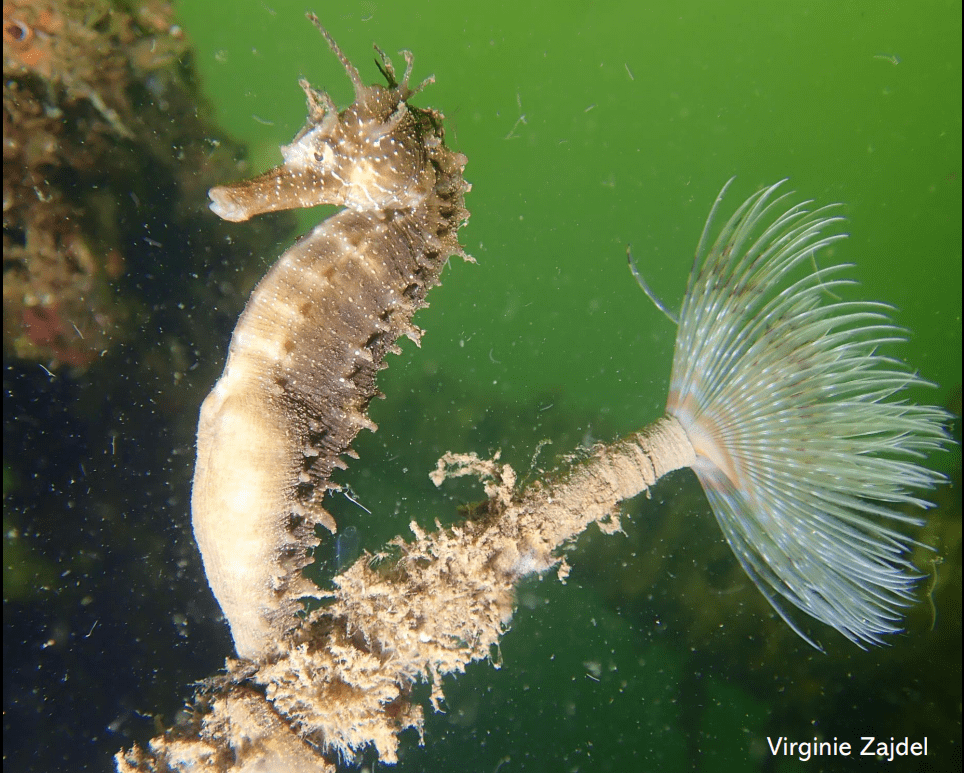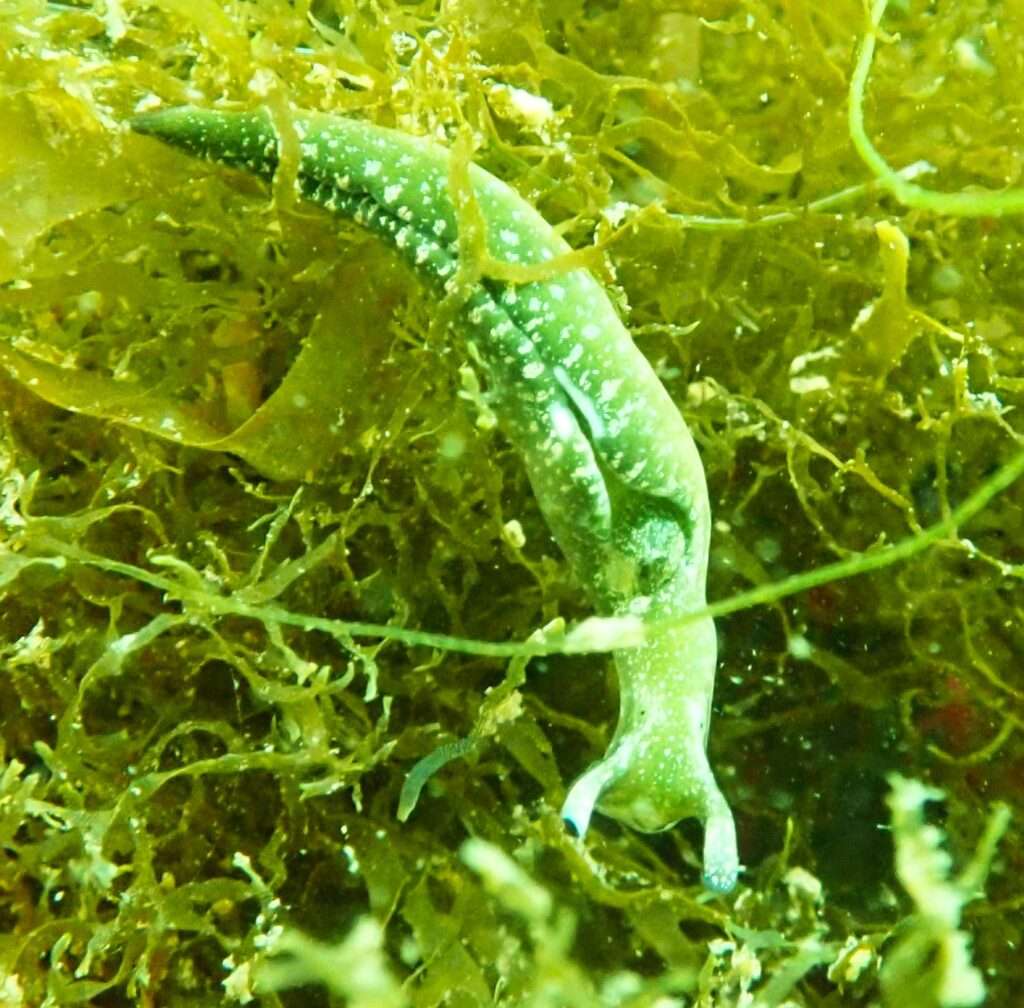Explore the depths of the Mediterranean
As part of the Fête de la Science 2024, Virginie Zajdel, a school teacher and continuing education trainee in the Master's program in Ecological Engineering and Biodiversity Management (IEGB) atMontpellier University's Faculty of Science, has designed a photo exhibition on marine biology in conjunction with the University Libraries.

Raising awareness of marine biology
Through this photo exhibition, Virginie Zajdel raises students' awareness of marine biology, and more specifically of one ecosystem in particular: sandy and/or muddy bottoms.
"I really wanted to make students aware of a substrate, a habitat, an ecosystem: soft bottoms, i.e. sandy or muddy bottoms. It's an ecosystem with a wealth of specific characteristics that are sometimes little-known.
There's a lot of life, but to know there's life, you have to dive at night. During the day, animals fear man, noise, light and other predators and hide in the sediment: mud or sand. At night, on the other hand, they come out to hunt and reproduce... And then there's an explosion of life, richness and color".
Highlighting the richness of the Mediterranean coastline
After identifying different dive sites with different substrates and sand gradations, Virginie Zajdel spent around a hundred hours diving and systematically recorded all the species encountered.
Endemic species
"I wanted to highlight little-known animals that are sometimes endemic to our region, such as the Tethys, a 30-centimeter slug endemic to our Mediterranean coasts, or the speckled seahorse, potentially endemic to the Etang de Thau.


"Some animals have incredible abilities to mimic, defend and protect themselves, or even function prodigiously, like the Elysia(Elysia Chlorotica), a slug capable of eating chloroplasts, the cells in plants specific to photosynthesis, without destroying them. Instead, it inserts them into the cells of its own body, performing its own photosynthesis.

I thought it was so fabulous that I thought I should do an exhibition to explain it to students.
Non-native species
In this project, Virginie Zajdel also sheds light on the presence of invasive alien species or non-native species (NIS) that thrive on our coasts and, having no predators, proliferate to the point of taking the place of native species.
This largely unregulated phenomenon is influenced by both global warming and globalization.
Conferences and Practical Workshops
The exhibition was the catalyst for a number of marine biology projects at the University of Montpellier.
Indeed, in response to the interest shown by students in the photo exhibition, Virginie Zajdel has scheduled a series of lectures throughout the year. During these lectures, she will study particular phyla, groups of animals or habitats (seagrass beds, rocky bottoms, sandy-muddy bottoms, etc.).
In addition, Virginie Zajdel has organized a photo identification workshop to help students feel involved in their learning process.
The aim: to enable students who are unable to dive to learn how to identify and classify a wide range of marine animals.
Thanks to the accreditation of a dedicated room at the Triolet University Library, students will be able to observe with a microscope and binocular magnifiers.
"I set myself the challenge this year of giving time to this project, which stems from the exhibition. The aim is to share knowledge, and several students have knowledge of these themes, so everyone is contributing their stone to the edifice."
New projects on the horizon...
The "Under the Surface" photo exhibition was the first point of contact with the students. In the end, this first project proved to be a test of Montpellier University students' interest in marine biology.
Given the enthusiasm generated by the exhibition and the students' desire to go further and learn more about these themes, Virginie Zajdel works daily on the creation of new projects.
"I've suggested that we draw up a monthly inventory of everything we see in Thau Lagoon. In this way, we'll be able to note together the potential presence of new species at different times of the year, or changes in species. We call it monitoring the specific richness of the site.
Last but not least, the "Immersion Aquatique" association, just set up on Virginie Zajdel's initiative, will be run by students with the aim of encouraging the development of projects and enabling Marine Biology to occupy an important place at the University of Montpellier.